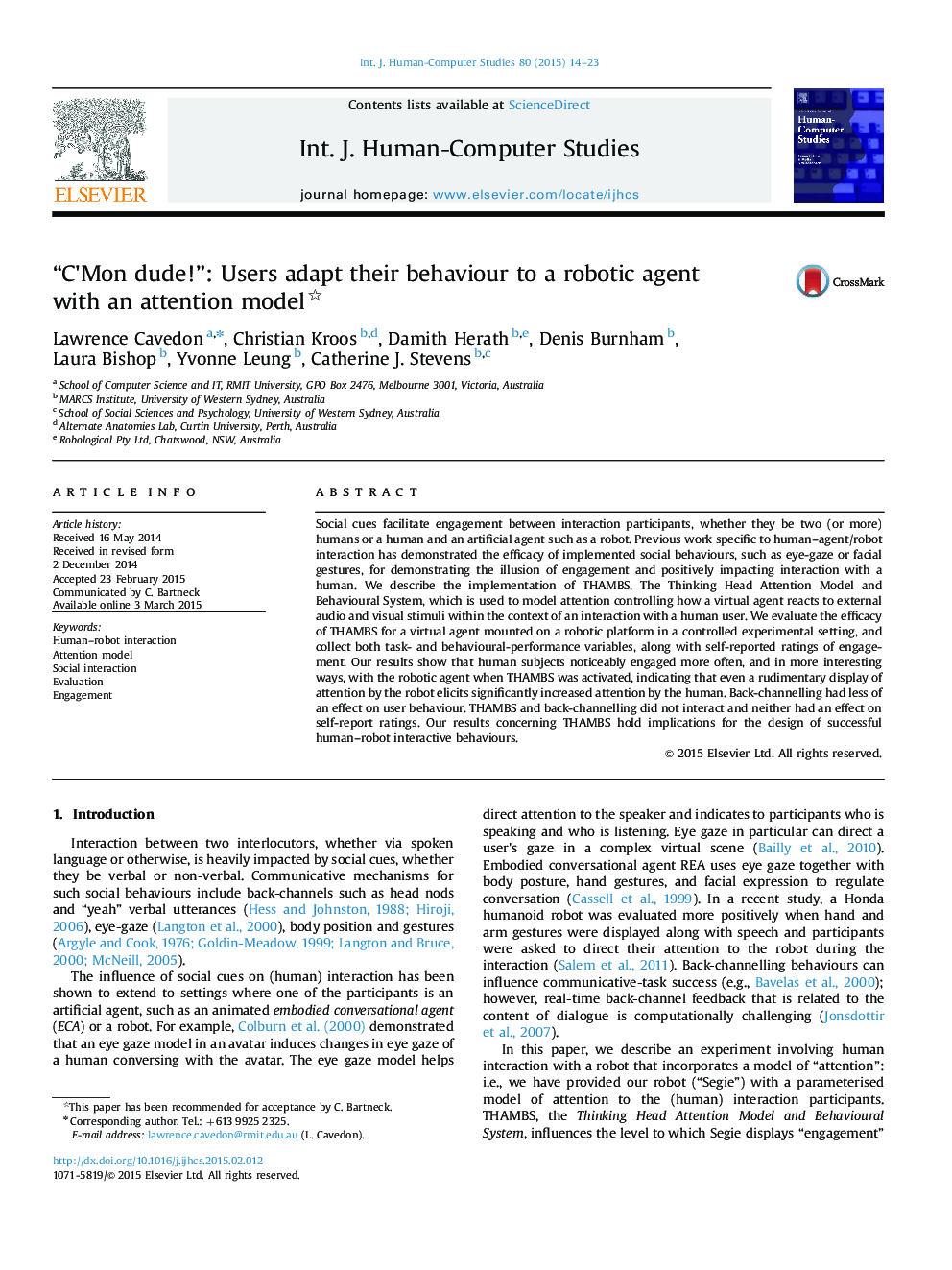| Article ID | Journal | Published Year | Pages | File Type |
|---|---|---|---|---|
| 6861078 | International Journal of Human-Computer Studies | 2015 | 10 Pages |
Abstract
Social cues facilitate engagement between interaction participants, whether they be two (or more) humans or a human and an artificial agent such as a robot. Previous work specific to human-agent/robot interaction has demonstrated the efficacy of implemented social behaviours, such as eye-gaze or facial gestures, for demonstrating the illusion of engagement and positively impacting interaction with a human. We describe the implementation of THAMBS, The Thinking Head Attention Model and Behavioural System, which is used to model attention controlling how a virtual agent reacts to external audio and visual stimuli within the context of an interaction with a human user. We evaluate the efficacy of THAMBS for a virtual agent mounted on a robotic platform in a controlled experimental setting, and collect both task- and behavioural-performance variables, along with self-reported ratings of engagement. Our results show that human subjects noticeably engaged more often, and in more interesting ways, with the robotic agent when THAMBS was activated, indicating that even a rudimentary display of attention by the robot elicits significantly increased attention by the human. Back-channelling had less of an effect on user behaviour. THAMBS and back-channelling did not interact and neither had an effect on self-report ratings. Our results concerning THAMBS hold implications for the design of successful human-robot interactive behaviours.
Related Topics
Physical Sciences and Engineering
Computer Science
Artificial Intelligence
Authors
Lawrence Cavedon, Christian Kroos, Damith Herath, Denis Burnham, Laura Bishop, Yvonne Leung, Catherine J. Stevens,
